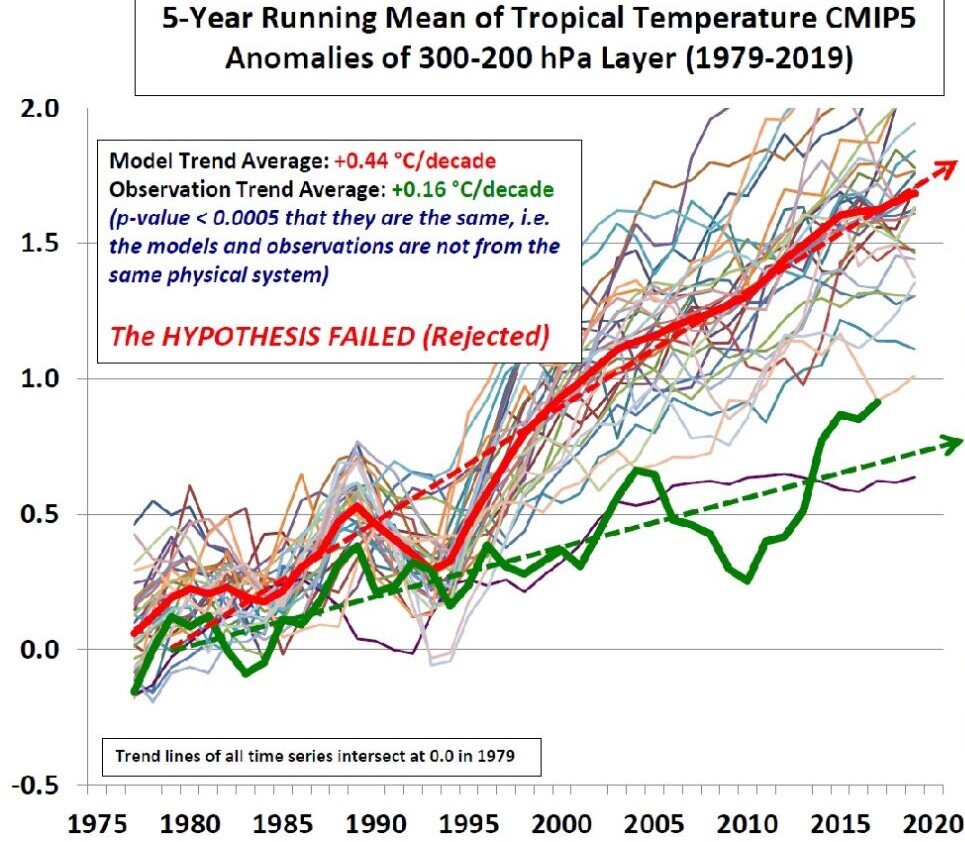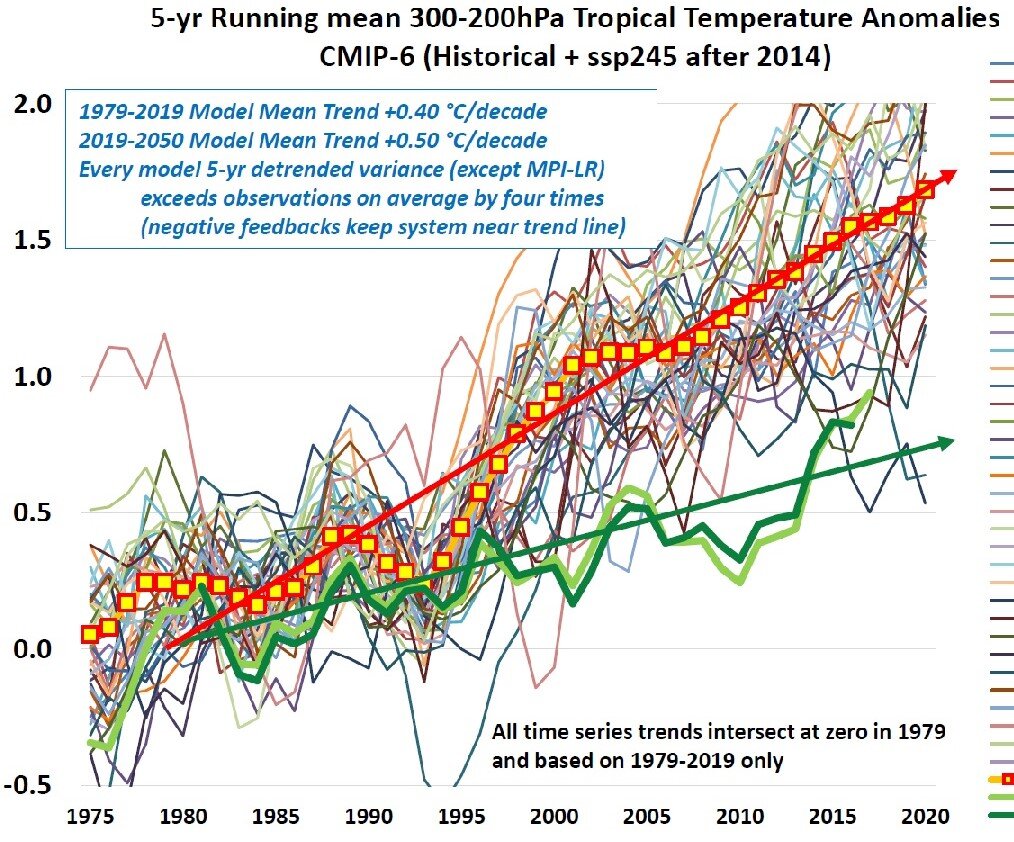How Near-Saturation of CO2 Limits Future Global Warming
/The climate change narrative is based in part on the concept that adding more and more CO2 to the atmosphere will cause the planet to become unbearably hot. But recent research refutes this notion by concluding that extra CO2 quickly becomes less effective in raising global temperatures – a saturation effect, long disputed by believers in the narrative.
First reported in 2020, the new and highly detailed research is described in a preprint by physicists William Happer and William van Wijngaarden. Happer is an emeritus professor at Princeton University and prominent in optical and radiation physics. In their paper, the two authors examine the radiative forcings – disturbances that alter the earth’s climate – of the five most abundant greenhouse gases, including CO2 and water vapor.
The researchers find that the current levels of atmospheric CO2 and water vapor are close to saturation. Saturation is a technical term meaning that the greenhouse effect has already had its maximum impact and further increases in concentration will cause little additional warming. For CO2, doubling its concentration from its 2015 level of 400 ppm (parts per million) to 800 ppm will increase its radiative forcing by just 1%. This increase in forcing will decrease the cooling radiation emitted to space by about 3 watts per square meter, out of a total of about 300 watts per square meter currently radiated to space.
The science behind greenhouse gas warming is illustrated in the figure below, depicting the wavelength spectrum of the intensity of thermal radiation transmitted through the atmosphere, where wavelength is measured in micrometers. Radiation is absorbed and radiated by the earth in two different wavelength regions: absorption of solar radiation takes place at short (ultraviolet and visible) wavelengths, shown in red in the top panel, while heat is radiated away at long (infrared) wavelengths, shown in blue.
Greenhouse gases in the atmosphere allow most of the downward shortwave radiation to pass through, but prevent a substantial portion of the upward longwave radiation from escaping – resulting in net warming, as suggested by the relative areas of red and blue in the figure above. The absorption by various greenhouse gases of upward (emitted) radiation at different wavelengths can be seen in the lower panels of the figure, water vapor and CO2 being the most dominant gases.
The research of Happer and van Wijngaarden takes into account both absorption and emission, as well as atmospheric temperature variation with altitude. The next figure shows the authors’ calculated spectrum for cooling outgoing radiation at the top of the atmosphere, as a function of wavenumber or spatial frequency rather than wavelength, which is the inverse of spatial frequency. (The temporal frequency is the spatial frequency multiplied by the speed of light.)
The blue curve is the spectrum for an atmosphere without any greenhouse gases at all, while the green curve is the spectrum for all greenhouse gases except CO2. Including CO2 results in the black or red curve, for concentrations of 400 ppm or 800 ppm, respectively; the gap in the spectrum represents the absorption of radiation that would otherwise cool the earth. The small decrease in area underneath the curve, from black to red, corresponds to the forcing increase of 3 watts per square meter resulting from doubling the CO2 level.
What matters for global warming is how much the additional forcing bumps up the temperature. This depends in part on the assumption made about climate feedback, since it’s the positive feedback from much more abundant water vapor in the atmosphere that is thought to amplify the modest temperature rise from CO2 acting alone. The strength of the water vapor feedback is closely tied to relative humidity.
Assuming positive water vapor feedback and constant relative humidity with increasing altitude, the preprint authors find that the extra forcing from doubled CO2 causes a temperature increase of 2.2 to 2.3 degrees Celsius (4.0 to 4.1 degrees Fahrenheit). If the water vapor feedback is set to zero, then the temperature increase is only 1.4 degrees Celsius (2.5 degrees Fahrenheit). These results can be compared with the prediction of 2.6 to 4.1 degrees Celsius (4.7 to 7.4 degrees Fahrenheit) in a recent study based on computer climate models and other evidence.
Although an assumption of zero water vapor feedback may seem unrealistic, Happer points out that something important is missing from their calculations, and that is feedback from clouds – an omission the authors are currently working on. Net cloud feedback, from both low and high clouds, is poorly understood currently but could be negative rather than positive.
If indeed overall cloud feedback is negative rather than positive, it’s possible that negative feedbacks in the climate system from the lapse rate (the rate of temperature decrease with altitude in the lower atmosphere) and clouds dominate the positive feedbacks from water vapor, and from snow and ice. In either case, this research demonstrates that future global warming won’t be nearly as troublesome as the climate change narrative insists.
Next: Natural Sources of Global Cooling: (1) Solar Variability and La Niña



















